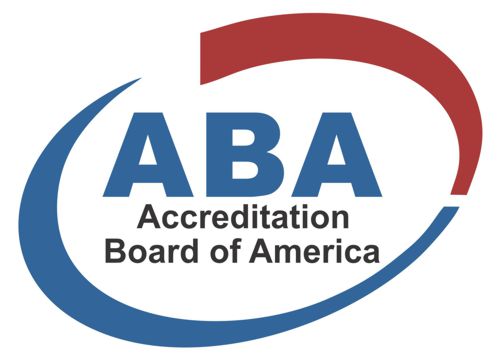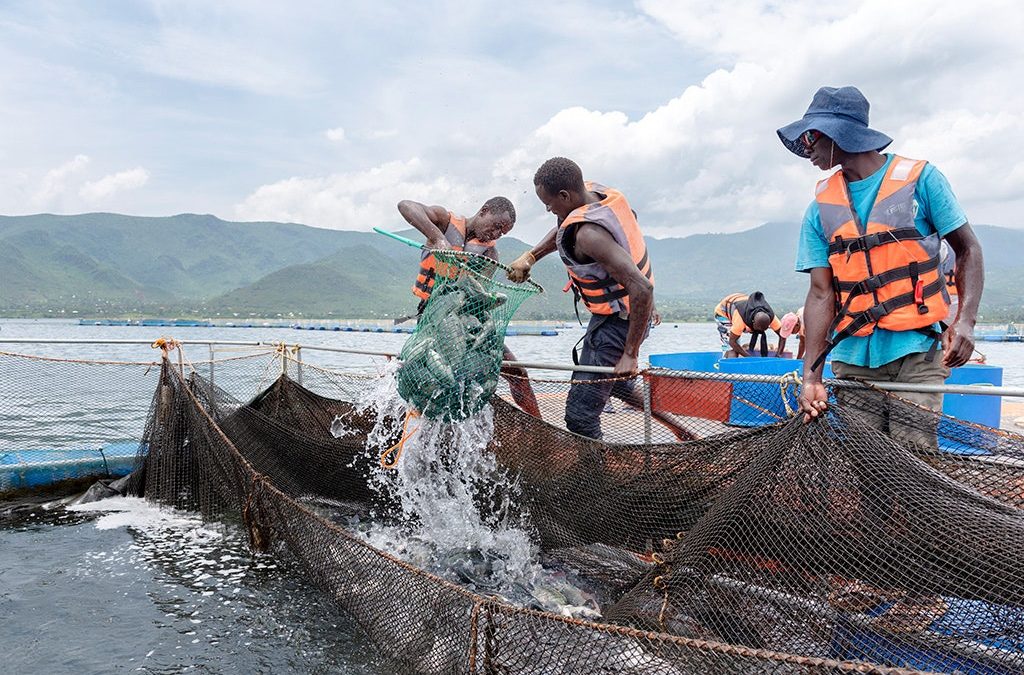
Editor’s note: From “blue carbon” to “ecosystem services,” environmental jargon is everywhere these days. Conservation International looks to make sense of it in an occasional explainer series we’re calling “What on Earth?”
In this installment, we dive into “aquaculture,” a method for farming fish, which can sustainably satisfy the world’s growing appetite for seafood — when done correctly.
What is ‘aquaculture’?
Aquaculture is a fancy term for “farming” seafood — breeding and harvesting fish, shellfish, seaweed and other species in tanks, ponds, rivers, lakes or oceans.
Why do we need to farm fish? Aren’t there plenty of fish in the sea?
There’s a limit to how much wild fish that humans can sustainably catch. The global appetite for fish, crustaceans and other species — from marine and freshwater ecosystems — has dramatically increased in the past several decades: Currently, one-third of the world’s wild fisheries are depleted because of overfishing, pollution and the effects of climate change. Populations of our favorite fish — from cod to salmon — are collapsing around the world. We are fishing them faster than they can reproduce.
Fortunately, aquaculture can help produce more seafood without depleting oceans and freshwater ecosystems. With 3 billion people — that’s three out of every seven humans on the planet — relying on seafood as their chief source of protein, aquaculture will be necessary to feed a growing population.
So how much seafood is currently farmed?
More than half of all seafood consumed today is farmed, and scientists project that aquaculture production must double by 2050 to meet growing demand.
I’ve heard that aquaculture can be bad for the environment.
In some cases, that’s true; aquaculture can have massive environmental impacts if practiced unsustainably. The first casualty is typically coastal forests, which are cut down for fish farms to expand. Water quality is also a concern when water polluted with chemicals and excess nutrients— not to mention fish feces — leaks into surrounding ecosystems, triggering harmful algae blooms and hurting wild aquatic species. If left unchecked, the farmed species themselves can be wiped out by poor water quality and disease.
If practiced correctly, however, aquaculture has the potential to increase seafood production without coming at the expense of nature. And in terms of greenhouse gas emissions, sustainably farmed seafood has a much smaller footprint than beef.
What does ‘practiced correctly’ look like?
Let’s bring in an expert to explain.
“There are many things that go into making aquaculture more sustainable, including filtering the water on a farm before releasing it into surrounding ecosystems, avoiding deforestation, limiting the use of antibiotics and more — the list goes on,” says Dane Klinger, who runs the aquaculture program at Conservation International.
“But sustainable aquaculture doesn’t stop at the farm. The entire aquaculture industry, including processors, importers, retailers and restaurant owners, has a role to play in incentivizing and adopting sustainable practices throughout the supply chain — from what the fish are fed to what ends up on your dinner table.”
How can this be done at a typical fish farm?
Well, there isn’t really a “typical” fish farm. Although Asia accounts for 89 percent of the global production, aquaculture can be found in nearly every corner of the world.
However, farms tend to look completely different depending on their location and the species they’re raising. In Norway, for example, farmers use massive freshwater tanks to raise juvenile salmon, then transfer them to netted areas in the ocean where they grow to a size that can be harvested. Meanwhile, in Hawai‘i, local communities manage a network of small coastal fish ponds for mullet and shrimp.
While each species of fish, shellfish or seaweed requires unique conditions and processes to thrive, there are some commonalities: Aquaculture farmers must constantly monitor their farms and stocks to ensure that conditions are optimal for animal health. This includes maintaining the right water temperatures and cleanliness, providing the correct amount of feed or nutrients, and managing a variety of other factors.
If any of these factors are out of balance, there could be consequences for the aquaculture farm — and local ecosystems.
That sounds like a lot of work.
At first, yes. But in the long run sustainably managed fish farms are not only better for the environment, they can also be more profitable and productive than their unsustainable counterparts.
According to Klinger, investing in better disease management, high-quality and low-impact fish feed, technology to filter water and selective breeding programs can dramatically increase a farm’s overall success — and shrink its environmental footprint.
“Think of sustainable aquaculture as an upfront investment for a big payoff a few years down the line,” he explains. “The key is to increase efficiency on existing farms rather than expanding.”
When is that payoff happening?
The good news: The aquaculture industry has already made significant strides toward sustainability over the past two decades, according to a recent paper co-authored by Klinger.
“Several decades ago, the shrimp aquaculture industry was driving the destruction of mangrove forests, which play a critical part in slowing climate change due to their ability to store massive amounts of carbon,” Klinger says.
Now, shrimp farmers are minimizing deforestation by choosing sites that do not destroy mangrove forests or ramping up production on existing farms, Klinger’s study shows. Conservation International is currently working with financial institutions and the shrimp sector to help farmers produce more seafood on less land, while restoring mangroves on former shrimp ponds.
“Waste was also a problem, as massive stocks of wild-caught fish were ground up and used to feed smaller numbers of farmed salmon and shrimp. In some cases, it took more than 5 kilograms (10 pounds) of wild-caught fish to produce a kilogram (2.2 pounds) of farmed fish.”
Now, many farmers have started using lower-impact feed ingredients, such as plant-based proteins, insects or even single-celled yeast grown in a lab. The added bonus? Plant-based feed is often a lot cheaper than wild fish feed.
Sounds like things are headed in the right direction.
Yes, but there’s still a long way to go.
In a lot of cases, smaller farms lack the financial means and access to technology to make aquaculture more sustainable. Luckily, low-tech fixes — such as collecting waste before it can pollute surrounding ecosystems or limiting the excessive use of antibiotics through better management — can lead to a sea change in small and medium-sized aquaculture farms.
But to really make a positive environmental impact, these practices must be implemented by every farmer in a watershed.
“Say you have a shrimp farm in Southeast Asia that is doing all the right things to ensure that their stocks are managed sustainably,” says Klinger. “That’s a great start, but if neighboring shrimp farmers are polluting the water, they’re exposing every farm in that watershed to risks like disease outbreaks and poor water quality.”
How can we ensure that all aquaculture farmers play by the same sustainability rule book?
Okay, you lost me.
Don’t worry, it sounds more complicated than it is. Basically, the jurisdictional approach is a set of standards to advance the environmental sustainability, social responsibility and economic performance of an entire national or regional jurisdiction — in this case a body of water — rather than a single farm.
“This approach is about helping aquaculture farmers realize the financial and environmental benefits of better management practices,” Klinger notes. “To do this, there must be incentives that encourage sustainability across the aquaculture sector.”
What kind of incentives are we talking about?
Financial tools like insurance or improved access to finance can help aquaculture farms deal with risks and also incentivize better environmental practices.
For example, Conservation International recently invested in Victory Farms — a responsible aquaculture business that produces tilapia on Lake Victoria in Kenya and sells it primarily in low-income neighborhoods across the country. With funding from CI Ventures, Conservation International’s investment fund for sustainable enterprises, Victory Farms increased tilapia production to over 8,000 tons per year.
Any other promising strategies or new technologies to make aquaculture more sustainable?
Absolutely. Developing aquaculture farms in the open ocean, rather than on coastal lands, could help increase seafood production without damaging sensitive coastal habitats and cutting down more mangroves. Also, new technologies are helping farms clean and recirculate the water used in their tanks to help prevent disease and pollution.
Scientists are even working to help aquaculture farmers adapt to climate change by breeding fish that are more tolerant of warming waters.
“Developing new technology is crucial to transforming the aquaculture sector, but improvements must include low-cost solutions for small-scale farms, which make up the majority of producers in many regions,” Klinger says. “When done well, aquaculture can play an important role in making global food systems more sustainable by providing food and jobs with a smaller environmental footprint.”
Dane Klinger is the director of aquaculture at Conservation International. Kiley Price is the managing editor at Conservation International. Want to read more stories like this? Sign up for email updates here. Donate to Conservation International here.
Cover image: Victory Farms is a fish farm, based in rural Roo, Homa Bay, Kenya (© Victory Farms)
If you’d like to read the original source of this article please click here Visit Source

